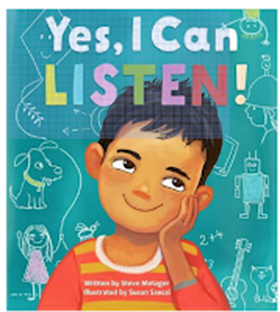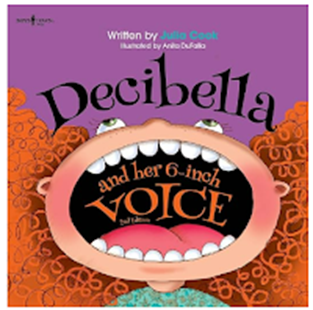A.L.I.C.E. (Alert, Lockdown, Inform, Counter, and Evacuate) is a proactive response strategy designed to enhance safety and resilience in the face of emergencies. While originally developed for school safety protocols, the principles of A.L.I.C.E. can also be applied to character education, helping students build resilience, self-confidence, and problem-solving skills. Here’s a friendly guide to integrating the A.L.I.C.E. framework into character education to foster these important traits in your classroom.
I'm Not Scared...I'm Prepared! by Julia Cook
Definition: The first step in the A.L.I.C.E. strategy is to be alert and aware of your surroundings. This involves recognizing potential dangers and staying informed about your environment.
Character Education Application:
- Teach Awareness: Help students understand the importance of being aware of their surroundings and staying informed about their environment. This can apply to everyday situations as well, such as being attentive in class or during group activities.
Example Activity:
- Situational Awareness Exercise: "Discuss with students how being aware of their surroundings can help them make better decisions. Role-play different scenarios where awareness is important, such as finding a lost item or working in a group."
2. Lockdown: Secure and Protect
Definition: Lockdown involves securing yourself in a safe area and protecting yourself from potential threats. This step emphasizes safety and security.
Character Education Application:
- Teach Self-Protection: Emphasize the importance of protecting oneself and others in various situations. This can include physical safety as well as emotional well-being, such as setting boundaries and seeking help when needed.
Example Activity:
- Safety Planning: "Have students brainstorm and discuss ways to stay safe and secure in different situations, such as dealing with peer pressure or managing personal boundaries. Create a ‘Safety Plan’ with strategies they can use."
3. Inform: Communicate and Share Information
Definition: Inform involves sharing important information with others and communicating clearly to ensure everyone is aware of the situation.
Character Education Application:
- Encourage Communication: Teach students the value of effective communication and sharing important information. Emphasize how clear and honest communication can help solve problems and keep everyone informed.
Example Activity:
- Communication Role-Play: "Practice scenarios where students need to communicate important information, such as informing a teacher about a problem or sharing a solution in a group project. Discuss how clear communication helps everyone stay on the same page."
4. Counter: Act and Respond
Definition: Counter involves taking proactive actions to address the situation and respond effectively. This step emphasizes problem-solving and taking action when necessary.
Character Education Application:
- Foster Problem-Solving Skills: Encourage students to take initiative and use problem-solving skills when faced with challenges. Teach them how to approach problems calmly and creatively to find solutions.
Example Activity:
- Problem-Solving Scenarios: "Present students with different problems or challenges and guide them through the process of finding solutions. Discuss how taking action and using problem-solving skills can lead to positive outcomes."
5. Evacuate: Leave Safely and Efficiently
Definition: Evacuate involves leaving the area safely and efficiently if necessary. This step focuses on planning and executing a safe exit strategy.
Character Education Application:
- Teach Planning and Adaptability: Emphasize the importance of planning and being adaptable in different situations. Help students understand that having a plan and being flexible can help them navigate various challenges.
Example Activity:
- Exit Planning Exercise: "Discuss the importance of having a plan for different situations, such as leaving a crowded area safely or adapting to changes in a project. Practice creating and following plans to achieve goals."
6. Integrate A.L.I.C.E. Principles into Daily Activities
Incorporate the principles of A.L.I.C.E. into everyday classroom activities to reinforce resilience and problem-solving skills. Use these principles as a framework for teaching and practicing important life skills.
Example Integration:
- Classroom Challenges: "Use classroom activities and projects to practice the A.L.I.C.E. principles. For example, during a group project, discuss how students can stay alert, communicate effectively, take action, and adapt to changes."
7. Encourage Reflection and Growth
Encourage students to reflect on how they can apply the A.L.I.C.E. principles in their daily lives. Discuss how these skills contribute to their personal growth and resilience.
Example Reflection:
- Personal Growth Discussion: "Reflect on how being alert, communicating clearly, taking action, and planning can help you in school and at home. Discuss how these skills can make you more resilient and confident in facing challenges."
8. Involve Families in Reinforcing A.L.I.C.E. Principles
Share the A.L.I.C.E. principles with families and encourage them to reinforce these concepts at home. Provide resources and tips for supporting students in applying these skills in their daily lives.
Tips for Families:
- Home Safety Planning: "Encourage families to discuss safety plans and problem-solving strategies at home. Reinforce the importance of communication and adaptability in everyday situations."
- Support Problem-Solving: "Help children practice problem-solving skills and discuss how to handle various challenges. Provide opportunities for them to take action and adapt to changes."
By integrating the A.L.I.C.E. principles into character education, you help students develop resilience, confidence, and effective problem-solving skills. These principles not only enhance their ability to handle emergencies but also support their growth and success in everyday situations.
For more ideas and resources on building resilience and character, visit my blog, Lanie’s Little Learners, where I share creative, hands-on activities that support active learning and character development. Let’s work together to create a classroom where every student feels empowered and prepared to face challenges with confidence.












